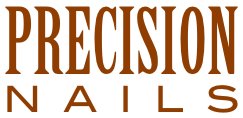It’s fairly common for nail salons to offer add-on services, like paraffin treatments, French polish and nail art. The options and pricing vary, of course, because there’s a great deal of flexibility and few guidelines. For example, a salon offering nail art might charge by the nail, the time required, the difficulty of the design, or the amount of colors/glitter/rhinestones/etc. used. While add-ons have the potential to significantly increase revenue, their success depends on desirability, cost- and time-effectiveness and client perceptions of value.
Before exploring these variables, I want to acknowledge that for the purpose of this discussion, I will focus on nail-related add-on services only. Many salons have expanded their menus to include more unconventional services, but I caution salon owners against straying beyond their primary business, performing regulated beauty services. Just because clients want something doesn’t mean that you’re qualified/licensed to provide it, or that their/your best interests would be served if you did.
When considering the introduction of a new service, ask yourself, “Will this service enhance my reputation as a successful nail professional?” For example, consider “detox” foot soaks. Be sensible. If detoxifying were even possible through feet (it’s not; ask a reputable doctor) and capable of curing ailments/diseases (really?), you’d be practicing medicine which is definitely NOT within your scope of practice. Conversely, if it’s a scam (it is; just ask a chemist if you’re still not convinced), then you’d be practicing quackery which is unethical and unprofessional. Why risk your reputation when your credibility would be permanently damaged? Please, don’t. Now back to our discussion . . .
Much like retail, add-ons have a somewhat negative connotation as an “up-sell,” an extra or more expensive service that you must persuade clients to purchase. As a nail professional and salon owner, I want to provide services clients need and want, without any convincing on my part. What’s the secret? Add-ons sell themselves when clients desire them. It all depends on how your salon defines an add-on.
When developing services, I recommend giving your clients options, but not too many, otherwise scheduling and explaining the differences among services become too complicated. This can be easily avoided by creating two distinct levels of service: a very simple one that meets basic nail care needs and another that packages more luxury into an expanded service. Pedicures provide a ready example:
Basic
- Nail shaping
- Cuticle work
- Nail shaping
- Cuticle work
- Callus work
- Exfoliation
- Paraffin
- Massage
Note that neither of these services includes polish. Why? We don’t assume that only women need/want their nails done; men deserve and appreciate professional nail care also. Besides, not all women want polish and some men do. I deliberately name and describe services in a gender-neutral way, because the quality of the service and the products used don’t change according to the client’s gender. Pricing should be based on the service provided, not on who’s receiving it. Our clients, whether male or female, can add a polish application or buffing to either the basic or expanded service for an additional charge; that’s the client’s choice. (Our salon doesn’t offer nail art; that’s my choice).
The cost- and time-effectiveness of an add-on service should be calculated like any other service. My standard is to price a service at no less than a $1/minute, and to limit product costs to no more than 10% of the service cost. For example, we charge $15 for a polish application or buffing, and schedule an additional 15 minutes, though it may take less time. (To learn more about my competitive pricing strategy, please reference the article published in the March 2011 Stylist).
Despite their potential, add-ons cannot generate any revenue if clients aren’t charged for them. That sounds obvious, but I cannot count the number of nail professionals who complain that their clients expect “freebies,” like nail art/repairs/massage/etc. Despite their perceptions, clients must be held financially accountable for the services they choose to receive. To firmly establish your value, produce a comprehensive brochure with enticing service descriptions that detail what’s included, the time allowed and the price. Your salon policies (appointments, cancellations, payment options, etc.) also need to be explained in writing. When asked about your service prices, whether in person, by email or phone call, be prepared to ask some questions to determine which services, if any, best meet the client’s needs. And make sure to charge accordingly.
By Jaime Schrabeck, Ph.D.




